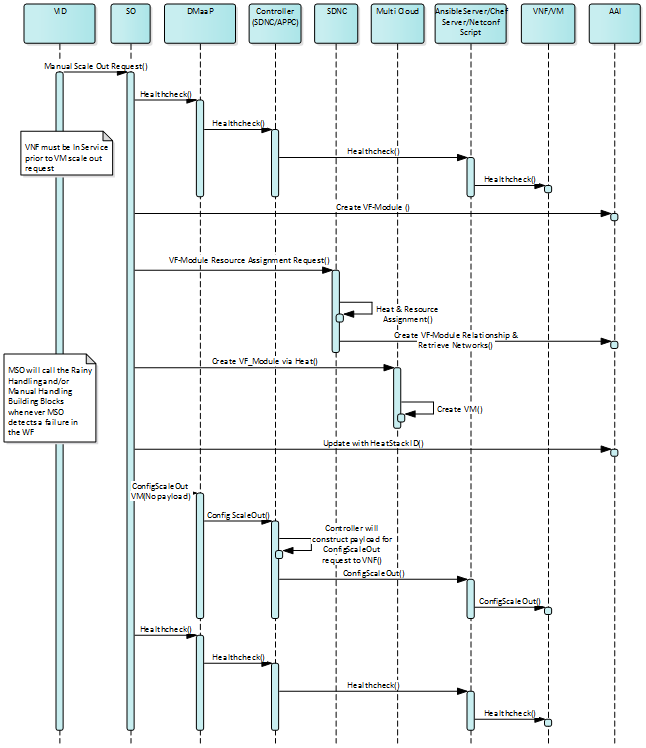(VNF Perspective)
In its Beijing Release, ONAP will support the ability to manually scale out VNF Components. Below is the Sequence Diagram for how Manual Scale Out will work in ONAP.
Description of Workflow
At a high level the way Manual Scale Out will work is:
- Using VID, the operator will choose to scale out a VNFC by picking a VF_Module to scale and choosing which controller is responsible for that VNF.
- VID sends the Scale Out Request to SO
- When SO receives the Scaling request it will first send a request to the appropriate controller (APPC or SDNC) to execute a Healthcheck on the VNF.
- Once the Healthcheck has been run, SO executes the Heat Template associated with the VF Module requested by the VID Operator.
- After the new component(s) have been instantiated SO calls the responsible controller (via DMaaP) to configure the new instances
- Finally a Healthcheck is run to ensure that the entire VNF is Operating as it should
VNF Impacts
For VNFs to make use of the Manual Scaling Capabilities of ONAP, they must support the following functionality:
- VNFs must support a Healthcheck as described in: The Management Section of the ONAP VNF Guidelines.
- R-31809 is the requirement dictating the need for VNF Healthchecks
- The Ansible Healthcheck Playbook description may be found in The Ansible Standards and Capabilities Section
- VNF Heat Templates must be built according the VNF Modularity Rules
- The VF_Module to be scaled must be built according the VNF Modularity Rules for Incremental Modules
- Configuration of the VNF must be done via NETCONF, Chef, or Ansible as described in Configuration Management
